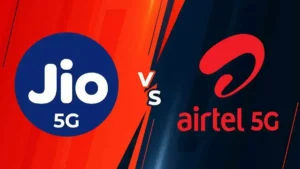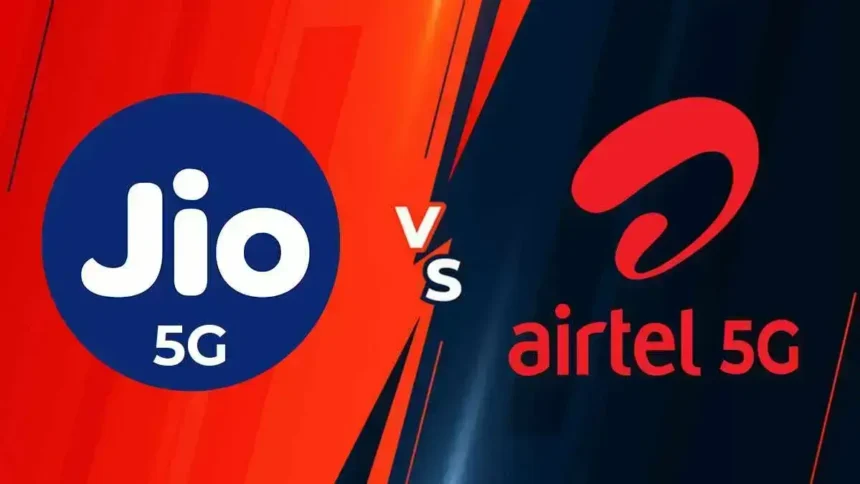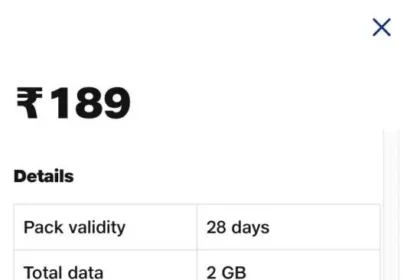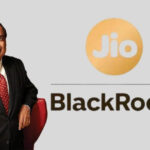Introduction
Reliance Jio started rolling out its 5G network in October 2022 in India, promising lightning-fast internet, ultra-low latency, and a future-proofed digital ecosystem. For a nation where mobile data underpins daily life—from watching cricket matches to studying online—hopes were high. With Jio already leading the 4G pack, millions were waiting to see how much better 5G would be.
The anticipation wasn’t solely about speed. Consumers prayed for smoother 4K video streaming, faster mobile gaming without lag, instant downloads, and interruption-free Zoom or Teams calls—even in packed locations. Companies, creators, and average smartphone users all set their expectations on Jio 5G to provide an actual-world boost over a simple new icon in the status bar.
But as with every technology, there’s usually a gap between test lab speeds and what customers really see on a daily basis. So, how quick is Jio 5G—actually? We dive into official speed test reports, user comments, and live data to know the actual performance of Jio’s new-generation network from various regions in the country. Regardless of whether you reside in a metro, a Tier-2 city, or a small town, here’s what Jio 5G is like in the real world.
Jio 5G Speed at a Glance
Jio’s 5G network—driven by standalone architecture and a combination of low-band and mid-band spectrum—is capable of offering scorching speeds compared with wired broadband. In reality, however, performance depends on where you are, the device you’re using, and even the time of day you’re connected. Here’s a brief snapshot of the main speed levels:
- Median speed in India, according to recent studies from Ookla and Opensignal, is generally in the range of 240–260 Mbps for downloads.
- In metropolitan cities such as Delhi, Mumbai, Bengaluru, and Hyderabad, customers commonly post download speeds of 400 to 800 Mbps, depending on load and signal quality.
- Jio tends to deploy 700 MHz low-band 5G for greater reach, and download speeds typically range from 80 to 150 Mbps.
Jio 5G Speed Tests
Independent speed test results give a more realistic view of how Jio 5G is faring in India, aside from the claims made during marketing. Based on Ookla’s 2024–2025 reports, Jio was consistently among the top performers in terms of download speeds for 5G. The average major Indian city was at around 258 Mbps, with others such as Gujarat and Maharashtra achieving even higher speeds. Upload rates were typically lower, ranging from 14 to 20 Mbps, a respectable leap higher than normal 4G.
Opensignal’s mid-2023 to mid-2025 long-term study is telling us something interesting: although Jio began with extremely high speeds during its first rollout—frequently in excess of 300 Mbps—median speeds decreased slightly over time as new users flooded onto the 5G network. Event data also affirms Jio’s dominance in dependability
Jio vs Airtel
When comparing Jio and Airtel’s 5G performance, the battle lines are clear: Airtel often takes the lead in raw speed tests, while Jio dominates in availability and network reach. But depending on what matters more to you—peak speed or consistent 5G access—the winner may vary.
When it comes to download speed, Airtel has now gained the lead in many urban areas with average speeds of 210–240 Mbps, going as high as 300 Mbps at times during non-peak hours. Jio, though not far off, generally clocks 200–225 Mbps in comparable settings. Upload speed is also in similar proportions: Airtel is slightly ahead with 20–22 Mbps against Jio’s 14–17 Mbps on average.

Latency, so important for gaming and video calls is marginally better on Airtel’s network, typically 20–25 milliseconds, whereas Jio floats around 25–30 milliseconds. Jitter (the fluctuation in latency) is also more consistent with Airtel in most comparisons, although both networks are much better than 4G. This renders Jio more dependable for users within Tier-2 cities and semi-urban regions as well as rural areas.
Jio 5G
Pros & Cons:
- Better 5G availability and coverage, even in non-metro areas
- More uniform experience with standalone 5G
- Improved continuous access in mixed environments (travel, suburban areas)
- Upload and latency performance slightly worse than Airtel
- Speeds can drop in extremely high-density urban areas due to congestion
Airtel 5G
Pros & Cons:
- Higher median download and upload speeds in top cities
- Lower latency—ideal for gaming and real-time applications
- Smooth performance in metro clusters and hotspots
- Lower 5G availability in non-metro locations
- Still employs non-standalone 5G for most locations, impacting coverage consistency
Real-World Performance by Location
Jio 5G speeds differ enormously depending on where you are. Your location, the load on the network, and the kind of 5G spectrum used all affect your real-world experience. In urban metros such as Delhi, Mumbai, and Bengaluru, Jio employs mid-band (n78) 5G spectrum that has greater data rates. Users in these locations tend to experience data speeds ranging from 400 to 800 Mbps, particularly when near towers and at off-peak times. Watching 4K content on streaming services, downloading large files in seconds, or online gaming with competitive multiplayer is seamless and almost lag-free in these zones. Speeds could, however, slow down to about 300–400 Mbps during peak hours (evenings or festivals).
Even in Tier 2 and Tier 3, cities such as Indore, Lucknow, Nagpur, or Kochi, Jio 5G works well. The speeds here typically range from 150 to 350 Mbps, depending on the coverage density of the area with mid-band towers and how congested the network happens to be. The performance is well beyond what is needed for daily activities such as HD video calls, Netflix streaming, or mobile gaming.
In suburban and rural regions, Jio depends mostly on its 700 MHz low-band 5G (n28). It has broader coverage and more reliable indoor penetration but at a lower maximum speed. In these areas, users end up with 80 to 150 Mbps download speeds. Though slower than mid-band 5G, it’s still a huge improvement over 4G when it comes to responsiveness, quality of streams, and uploading times.
Another important factor is device compatibility. Not every phone has support for both the n28 (700 MHz) and n78 (3300 MHz) bands. Some of the low-end or old 5G phones, for instance, will have n78, and that can restrict coverage in rural areas. Flagship devices from Samsung, Apple, and OnePlus have support for both bands, which should provide an improved 5G experience across locations.
What Impacts Jio 5G Speed?
Several key factors influence how fast your Jio 5G connection actually feels, and understanding them can help explain why speeds vary from one place—or moment—to another.
The spectrum band employed is one of the largest determining factors for speed. 5G of Jio is operated mainly on two bands: the 700 MHz low-band (n28) and the 3300 MHz mid-band (n78). The low-band provides superior coverage and indoor penetration but reduced speeds (around 80–150 Mbps), whereas the mid-band provides greater speeds (300–800 Mbps) in urban areas. mmWave bands, which can extend speeds above 1 Gbps, have yet to be massively deployed in India.
Congestion in the network is another major element. At peak usage periods—such as evenings, public events, or weekends—multiple users fight over the same bandwidth. This can lead to a slowdown, particularly in high-density areas such as shopping malls or apartment complexes. In contrast, early mornings or late evenings usually provide significantly higher speeds because there is less network activity.
The time of day has a direct correlation to this. Off-peak times generally have better performance, but during the evenings (6–10 PM), one may observe lower speeds, even on a good signal, because of increased concurrent use.
Your 5G device and data plan also affect availability. Older or low-end 5G phones might not have all of Jio’s active bands, particularly the 700 MHz one, which reduces availability in some regions.
Jio’s adoption of standalone (SA) 5G architecture is a strength and also a cause for speed fluctuation. SA 5G is directly connected to the 5G core network without depending on the 4G infrastructure, making it support lower latency and quicker response. Airtel, on the other hand, implements non-standalone (NSA) 5G, which tends to deliver quicker raw speeds in the initial phase because of 4G-5G convergence.
Use Case Experience
When it comes to actual usage scenarios, Jio 5G pretty much fulfills its role of delivering quicker, more seamless digital experiences—particularly in cities with good mid-band coverage.
For streaming 4K content, Jio 5G comfortably manages high-bitrate videos without any buffering. YouTube and Netflix load in an instant, and users enjoy smooth playback even when skipping or fast-forwarding. Such performance necessitates about 25 Mbps sustained speeds, which Jio 5G comfortably surpasses even in suburban areas.
In gaming online, particularly for quicker multiplayer games such as PUBG, BGMI, or Call of Duty: Mobile, Jio’s latency usually remains in the range of 25–35 milliseconds within urban localities. Though not exactly fiber-optic low, it’s well enough for quick response. However, during heavy overcrowding, players can feel the occasional spike—particularly within Tier 2 cities.
Video calls on platforms such as Zoom, Google Meet, or WhatsApp are also more stable and smoother on Jio 5G compared to 4G. The quicker uplink speeds (14–20 Mbps on average) enable sharper HD video and low latency enhances lip-sync and diminishes delays. Even group calls with screen sharing or virtual backgrounds perform well on the network.
For people downloading big files—such as movies, software updates, or cloud backups—Jio 5G can be a real game-changer. In the metros, files in the 1–2 GB space take less than a minute to download when network conditions are favorable. In mid-town areas, too, the speeds are quick enough to match wired broadband.
Hotspot sharing is another area where Jio 5G excels, particularly for users who require rapid internet connectivity on laptops or tablets while on the move.
Conclusion
Jio 5G is currently ideal for users who value wide and uniform coverage, particularly residents of Tier 2/3 cities, the suburbs, or those who frequently have to drive across states. With its 5G standalone architecture and widespread reliance on low-band spectrum, Jio keeps users connected to 5G much more frequently than competitors. If you rely on seamless data connectivity for work, streaming, or directions, Jio has a huge advantage in terms of availability.
For most metro markets that are pursuing the quickest download and upload speeds, Airtel may have a minimal advantage when it comes to pure performance, especially in areas of high-density mid-band deployment. However, the difference in real-world experience—such as video calling, streaming, and browsing—is seldom large enough to affect the typical consumer. Actually, many Airtel subscribers experience more fallback to 4G more often because of its non-standalone 5G configuration.
If 5G coverage and reliability are more important than peak speed, then yes. Jio’s aggressive deployment, broadest spectrum ownership, and bundling of its 5G plans are all strong selling points for most consumers. However, suppose you’re a gamer or speed aficionado who resides in a metro area where Airtel has superior coverage. In that case, you may still receive a marginally better ping and upload reliability there. Jio 5G delivers on much of its promise—not with sensational “gigabit” speeds everywhere, but with reliable, blanket 5G availability that accommodates current digital lifestyles. It’s a good step up from 4G, provided you have the right device and plan.
FAQs
- Does Jio 5G support all 5G smartphones?
No. Your phone needs to support the n28 (700 MHz) and n78 (3300 MHz) bands—Jio’s main 5G frequencies. Most recent smartphones (2022 and onwards) will have these, but some cheap or older phones might lack one of the bands, resulting in poorer coverage or reduced speeds.
- Is Jio’s Unlimited 5G really unlimited?
Yes, but with a catch. Unlimited 5G is only on eligible prepaid/postpaid plans ( Rs. 239 and higher) and in 5G coverage areas. There is no daily data limitation, but Fair Usage Policies (FUP) will be applicable during times of network congestion or high usage—particularly for hotspot tethering or extremely heavy downloads.
- Why is my Jio 5G speed slower than anticipated?
Your speed is dependent on several factors:
- You could be connected on the low-band (n28), which is coverage-first, not speed.
- Congestion at peak hours may slow you down.
- Your device may not be capable of carrier aggregation or the correct bands.
- Being indoors or a long distance from a tower also slows you down.
- You might not be on a 5G-eligible recharge plan.
- Can I use Jio 5G as a Wi-Fi hotspot?
Yes. Jio 5G does allow hotspot use, and tethering speeds tend to be great—particularly in mid-band areas. But if you use unlimited 5G quite a bit using hotspots (for example, for PC downloads or online streaming), you can be throttled under FUP rules.
- How does Jio 5G compare to Airtel in actual usage?
Due to its standalone 5 G network, Jio generally provides broader coverage and more accessible 5G availability—particularly in rural and Tier 2/3 cities. Airtel can provide marginally better speeds in certain metro cities owing to its non-standalone configuration, but Jio is more reliable for regular usage.








